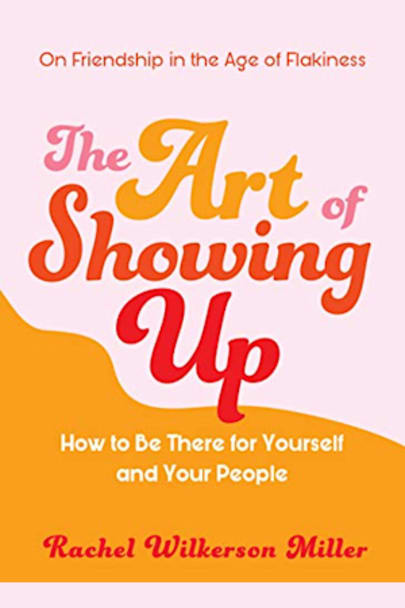If you’re having trouble connecting with those around you, know that you’re not the only one. Adult friendships are tricky!!! Part manifesto, part guide, The Art of Showing Up is soul medicine for our modern, tech-mediated age. Rachel Wilkerson Miller charts a course to kinder, more thoughtful, and more fulfilling relationships–and, crucially, she reminds us that “you can’t show up for others if … others if you aren’t showing up for yourself first.” Learn to fearlessly . . .
- define your needs, reclaim your time, and commit to self-care
- ask for backup when times are tough–and take action when others are in crisis
- meet and care for new friends, and gently end toxic friendships
- help your people feel more seen (and more OK) overall!
more



In The Art of Showing Up, Rachel Wilkerson Miller shares information, examples, exercises, and resources to help you better understand and show up for yourself and others. I love the author’s voice; she sounds casual, warm, friendly, relatable, and encouraging. Reading this book, I felt like I would love to be her friend, which makes me inclined to trust her advice on how to be a better friend.
This is a book I plan to return to often. Some sections work best if you allow plenty of time to explore the suggested questions and practices, while other sections might work best as a reference. The author encourages small steps repeated often to build tolerance to new habits, and she frequently acknowledges that we all have different contexts and abilities, so her advice feels feasible. I particularly loved her guidance on boundaries, which I think many of us struggle with. And I loved her discussion of “body neutrality,” an idea I wasn’t familiar with.
Her discussions of how to cope when difficult things happen, in your own life or someone else’s, are especially relevant during the current pandemic. I found the concept of different levels of friendship very helpful; I now feel more confident about choosing how much to disclose to friends of different levels.
I loved this book so much, and I highly recommend it for anyone interested in living a more authentic, aligned life and having better relationships of all kinds. Honestly, I would love to see everyone reading this book, and then perhaps we’d all have happier, healthier, more conscious relationships with ourselves and each other.
I was provided an unproofed ARC through NetGalley that I volunteered to review.
Miller has penned a fresh, wise, practical, modern guide for figuring out how to be true to yourself while also meaningfully connected to others. An important contribution to the larger, complicated project of solving loneliness.
Rachel’s advice is smart, straightforward, and empathetic. The Art of Showing Up offers a roadmap to becoming a better friend and happier person. Read this book!
A fan of this genre, the last several books I had read in it disappointed me. I opened the covers of this one with a bit of trepidation, expecting more of the same. I am happy to say that I enjoyed this book MUCH more than I thought I would! It earns 3.5 stars rounded to 4 stars from me!
This book is impressively comprehensive; it offers practical advice and even sample conversations to help you deal with situations and relationships that are difficult. The book is divided into two sections – how to be there for yourself, and how to be there for others.
Being there for yourself and taking care of yourself is something we often neglect to do. Miller helps you take an in-depth look at yourself, identify your values, what is important to you and what’s not. She also helps you assess what’s working for you in your life, your job, your relationships, where and how you live, and what is not working for you. You’ll read about levels of friendship, setting boundaries, what self-care encompasses and several other topics. This is a comprehensive look at YOU, and at the end of it, you will know yourself and what you want for yourself and your life better.
Part Two deals with How to Show Up for Others. It tackles how to make and maintain friendships, how to deal with relationships that may need extra work, how to navigate through hard times in your life or the life of your friend, how to have the hard conversations when someone is acting out of character or doing things that trouble you. It offers suggestions as to how to make your relationships work for you, and on the flip side, what to do when they don’t.
Practical advice and helpful sample conversations are offered throughout the book. This is a good read for anyone wanting to take better care of themselves and want to build strong, mutually beneficial relationships with others.
My thanks to NetGalley and The Experiment for allowing me to read a copy of this book in exchange for an unbiased review. All opinions expressed here are my own.